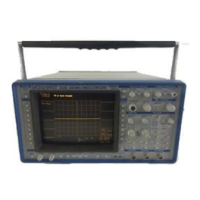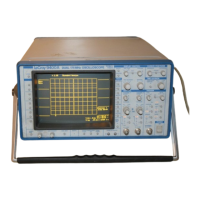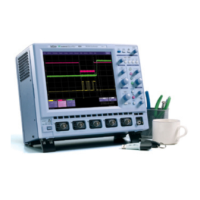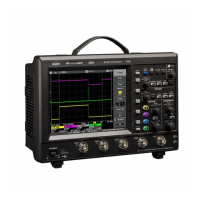C–15
FFT Algorithms
The energy of the signal at a frequency n is distributed
equally between the first and the second halves of the
spectrum; the energy at frequency 0 is completely contained
in the 0 term.
The first half of the spectrum (Re, Im), from 0 to the Nyquist
frequency is kept for further processing and doubled in
amplitude:
R'
n
= 2 ´ R
n
0 ≤ n < N/2
I'
n
= 2 ´ I
n
0 ≤ n < N/2.
6. The resultant waveform is computed for the spectrum type
selected.
If “Real”, “Imaginary”, or “Real + Imaginary” is selected, no
further computation is needed. The appropriate part of the
complex result is given as the result (R'
n
or I'
n
or R'
n
+ jI'
n
,
as defined above).
If “Magnitude” is selected, the magnitude of the complex
vector is computed as:
M R I
n n n
= +' '
2 2
.
Steps 1–6 lead to the following result:
An AC sine wave of amplitude 1.0 V with an integral number of
periods Np in the time window, transformed with the rectangular
window, results in a fundamental peak of 1.0 V magnitude in the
spectrum at frequency Np × ∆f. However, a DC component of
1.0 V, transformed with the rectangular window, results in a peak
of 2.0 V magnitude at 0 Hz.
The waveforms for the other available spectrum types are
computed as follows:
Phase: angle = arctan (I
n
/R
n
) M
n
> M
min
angle = 0 M
n
≤ M
min
.
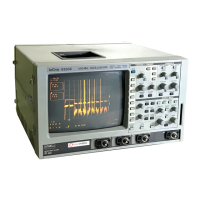
